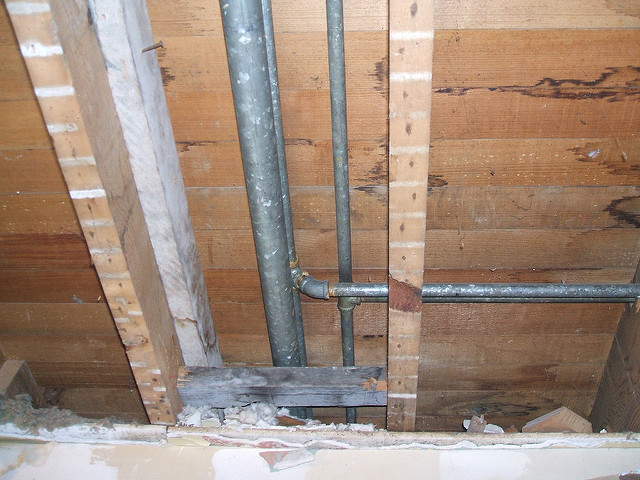Just how do you actually feel with regards to Detecting hidden plumbing leaks?

Early detection of dripping water lines can minimize a prospective calamity. Some tiny water leaks might not be noticeable.
1. Analyze the Water Meter
Every residence has a water meter. Checking it is a guaranteed manner in which helps you find leakages. For starters, shut off all the water resources. Ensure nobody will certainly flush, utilize the tap, shower, run the cleaning device or dishwashing machine. From there, most likely to the meter and watch if it will transform. Since no one is utilizing it, there need to be no movements. If it moves, that suggests a fast-moving leakage. Also, if you detect no changes, wait an hour or more as well as examine back once more. This indicates you might have a slow-moving leakage that can also be underground.
2. Check Water Usage
Examine your water expenses as well as track your water intake. As the one paying it, you need to observe if there are any type of disparities. If you detect sudden changes, regardless of your intake coinciding, it suggests that you have leakages in your plumbing system. Bear in mind, your water costs need to drop under the very same array on a monthly basis. An abrupt spike in your costs shows a fast-moving leak.
At the same time, a constant boost each month, despite the very same behaviors, shows you have a slow-moving leakage that's likewise slowly escalating. Call a plumber to extensively examine your residential property, particularly if you feel a cozy location on your floor with piping below.
3. Do a Food Coloring Test
When it comes to water consumption, 30% comes from bathrooms. If the color in some way infiltrates your dish throughout that time without flushing, there's a leakage between the container as well as dish.
4. Asses Exterior Lines
Don't forget to examine your exterior water lines too. Should water leak out of the link, you have a loosened rubber gasket. One little leakage can lose lots of water as well as increase your water bill.
5. Assess the scenario and also inspect
Homeowners must make it a routine to check under the sink counters and also inside cupboards for any bad odor or mold and mildew development. These two warnings show a leak so punctual interest is required. Doing regular inspections, even bi-annually, can conserve you from a major issue.
If you recognize your residence is currently old, maintain a careful eye on your heating systems, tubes, pipelines and so on. Look for discolorations as well as deteriorating as a lot of pipelines as well as home appliances have a life expectancy. They will also naturally deteriorate due to tear and also put on. Do not wait for it to rise if you believe dripping water lines in your plumbing system. Call an expert plumber as soon as possible so you do not end up with a dreadful mess in your home.
Early detection of leaking water lines can minimize a prospective calamity. Some little water leaks may not be noticeable. Inspecting it is a surefire means that assists you find leakages. One small leak can waste bunches of water as well as spike your water costs.
If you presume leaking water lines in your plumbing system, don't wait for it to escalate.
How to Know If Your Home Has a Hidden Leak
Water Meter Reveals Inexplicable Water Usage
If you’d like to test whether or not there’s a leak somewhere in your home, you can do this using your water meter. Here is how to conduct the test:
Don’t use any water in your home for at least 30 minutes; this also means not turning on faucets or water-using appliances.
Go outside, and check your water meter for activity.
If your water meter shows that there was activity, even though no one was using any water, this proves that there is a leak in your home.Visible Mold or Mildew Growth
Leaks behind walls create moist, dark environments that allow mold and mildew to grow and thrive. Eventually, you might see mold growth forming on the wall closest to a hidden leak.
If mold is growing in an area that receives a high amount of moisture, such as a bathroom, it may simply be an indication that better ventilation is needed. However, if you see mold growth on a wall or the ceiling in an area where you would not expect, you probably have a hidden leak.
Musty, Mildew Odor
Sometimes you might not be able to see the mold or mildew that is growing as a result of a leak. However, the smell can give the problem away just as easily. If you catch a whiff of something musty, there’s a good chance that old water is collecting somewhere in your home that you can’t see.
Stained/Warped Walls, Ceilings, or Floors
When your home soaks up water, a variety of red flags can become visible, including ceiling stains, bubbling drywall, warped walls, and sagging floors. While these issues can be caused by excess humidity, they can also be signs that a pipe or plumbing connection has started leaking behind your walls.
Inexplicably High Water Bill
After a while, you get a general sense for what your water bill should be. If you own a pool or sprinkler system, your bill will tend to be higher during summer. However, if you receive a water bill that seems especially high, and you can’t figure out what caused it, then you may have a hidden leak somewhere that’s increasing your bill.
https://www.plumbingjoint.com/blog/2019/july/how-to-know-if-your-home-has-a-hidden-leak/

I am very enthusiastic about Locating water leaks and I am assuming you enjoyed reading the page. Do you know somebody who is interested by Detecting hidden plumbing leaks? Take a moment to promote it. I value reading our article about Finding hidden leaks.